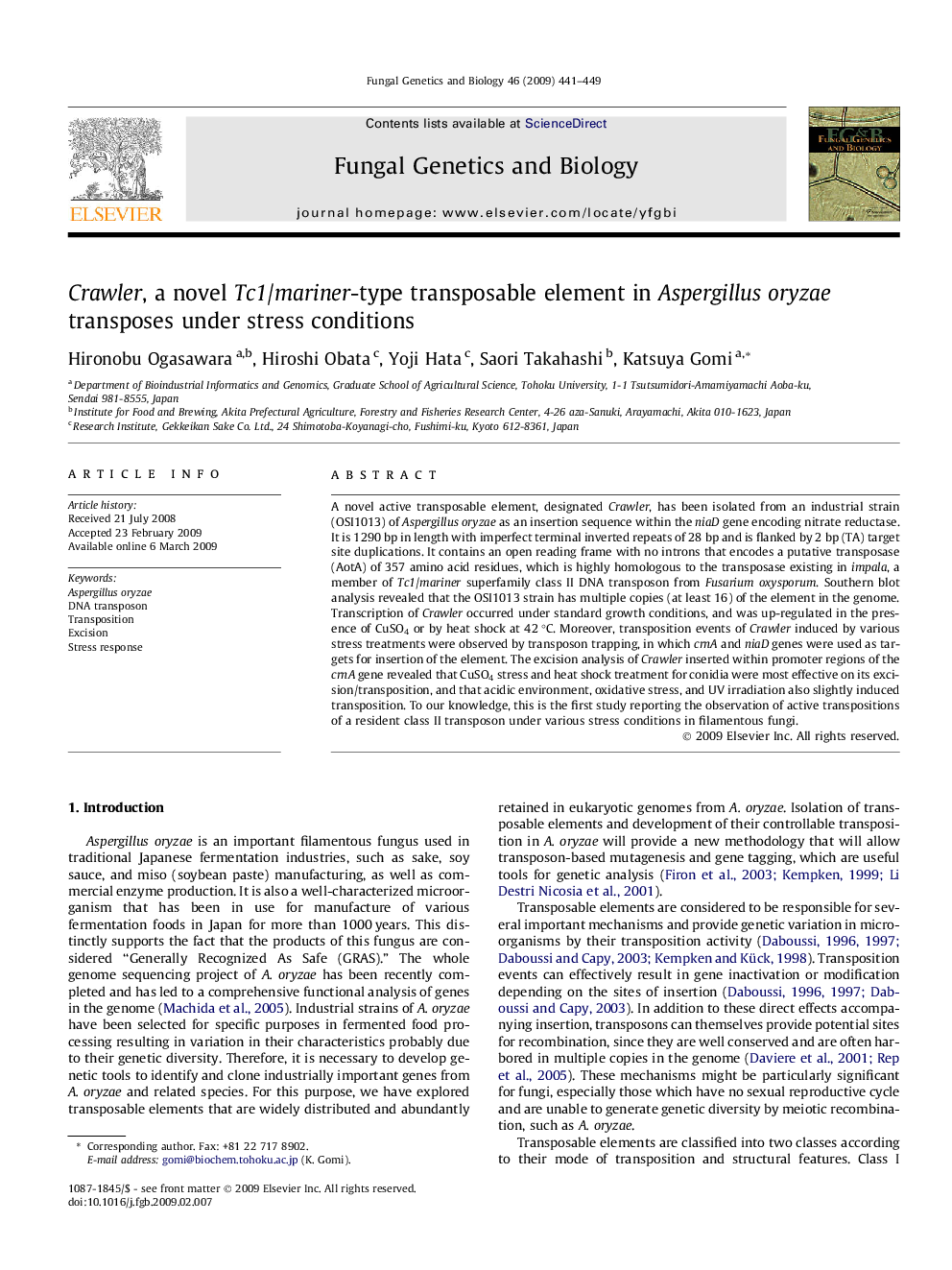| Article ID | Journal | Published Year | Pages | File Type |
|---|---|---|---|---|
| 2181164 | Fungal Genetics and Biology | 2009 | 9 Pages |
A novel active transposable element, designated Crawler, has been isolated from an industrial strain (OSI1013) of Aspergillus oryzae as an insertion sequence within the niaD gene encoding nitrate reductase. It is 1290 bp in length with imperfect terminal inverted repeats of 28 bp and is flanked by 2 bp (TA) target site duplications. It contains an open reading frame with no introns that encodes a putative transposase (AotA) of 357 amino acid residues, which is highly homologous to the transposase existing in impala, a member of Tc1/mariner superfamily class II DNA transposon from Fusarium oxysporum. Southern blot analysis revealed that the OSI1013 strain has multiple copies (at least 16) of the element in the genome. Transcription of Crawler occurred under standard growth conditions, and was up-regulated in the presence of CuSO4 or by heat shock at 42 °C. Moreover, transposition events of Crawler induced by various stress treatments were observed by transposon trapping, in which crnA and niaD genes were used as targets for insertion of the element. The excision analysis of Crawler inserted within promoter regions of the crnA gene revealed that CuSO4 stress and heat shock treatment for conidia were most effective on its excision/transposition, and that acidic environment, oxidative stress, and UV irradiation also slightly induced transposition. To our knowledge, this is the first study reporting the observation of active transpositions of a resident class II transposon under various stress conditions in filamentous fungi.
